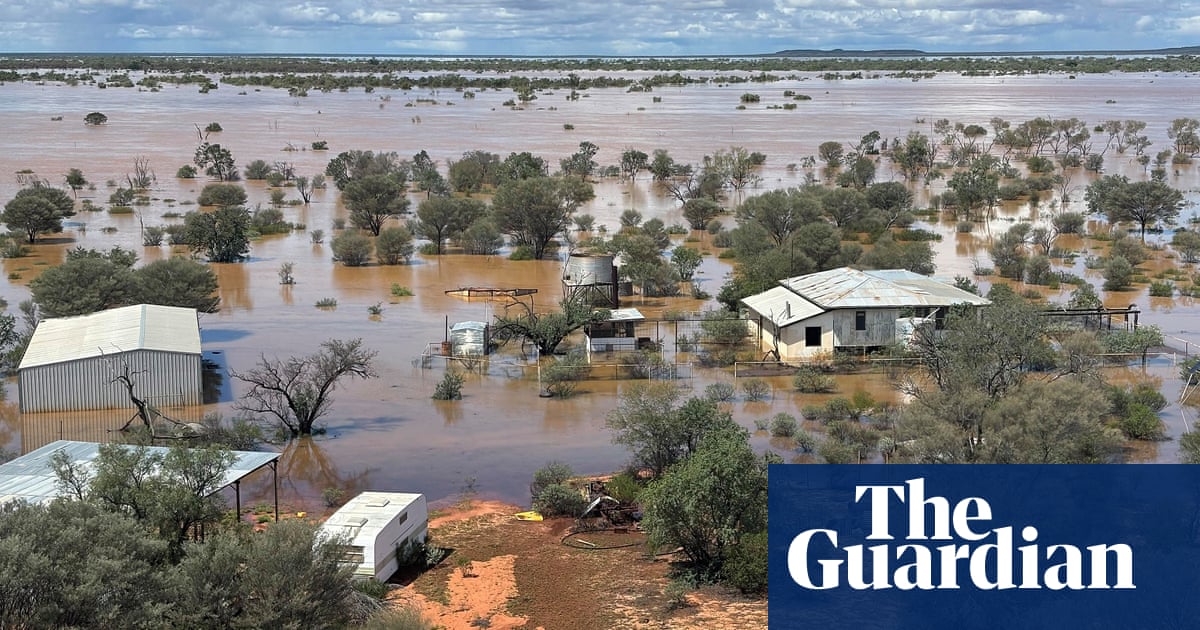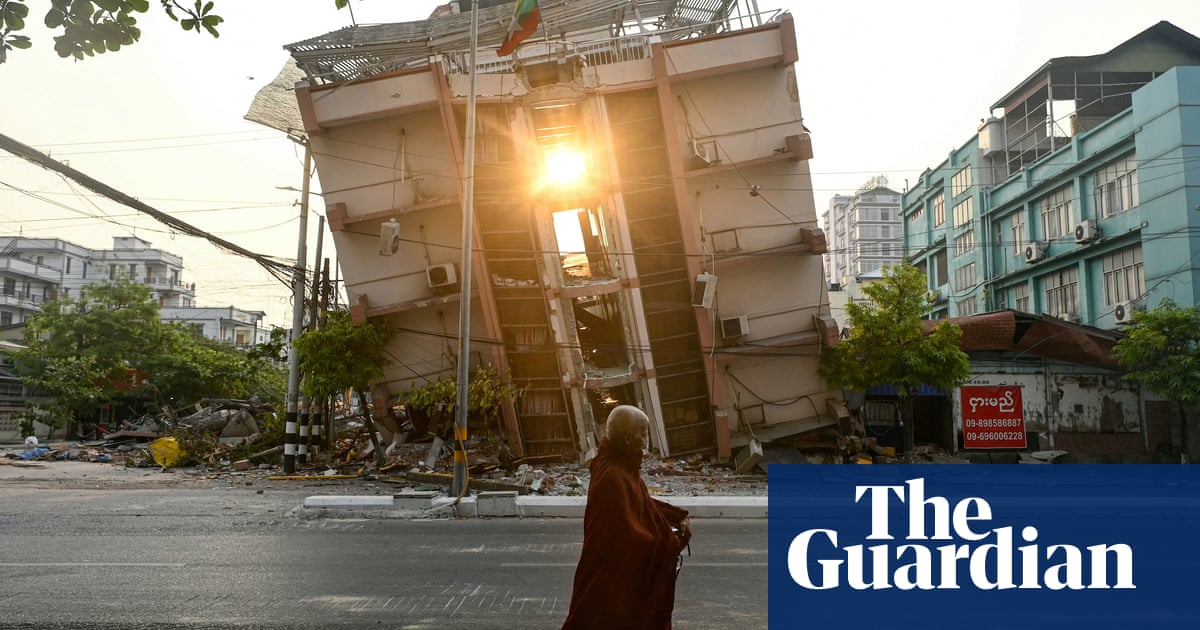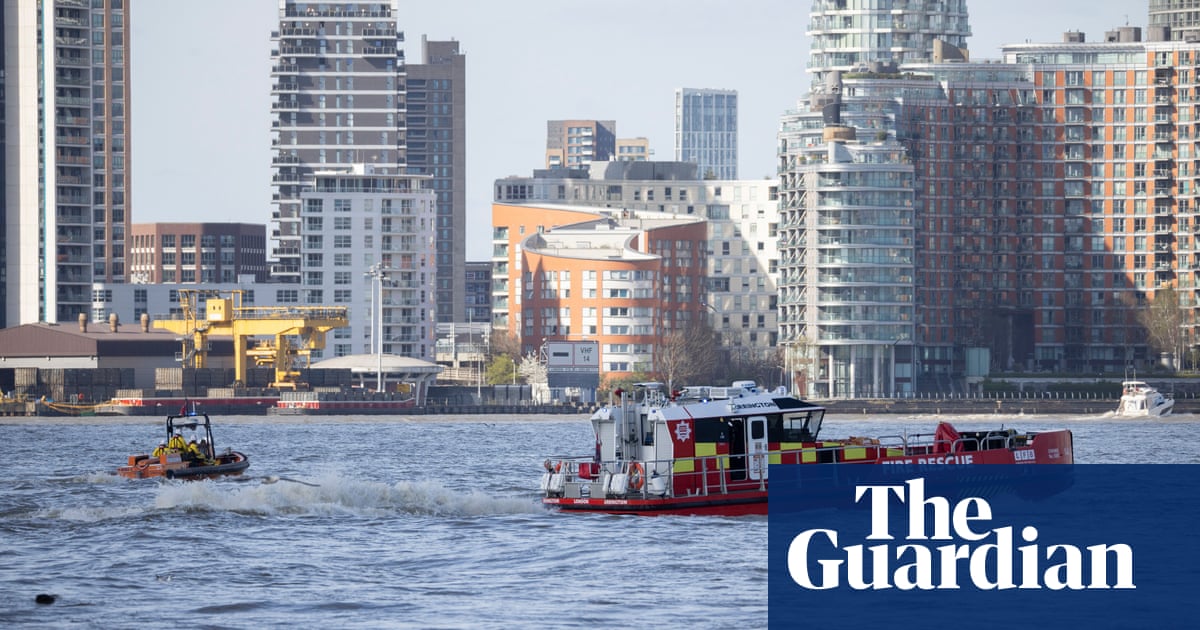Police have resumed the search for an elderly man who was swept into a flooded river on Saturday night, as authorities warn more heavy rain could isolate inland parts of New South Wales and Queensland for up to six weeks.
Flood warnings remain in place for vast areas of eastern Australia, after a record-breaking rain event.
Some parts of inland Queensland had their wettest March day for 15 years. Large-scale stock losses are expected in areas where flooding has been severe.
NSW State Emergency Service deputy commissioner Debbie Platz said some interior communities near the NSW-Queensland border should prepare for “long-term” isolation.
“Right across NSW we are experiencing a very dynamic and unpredictable weather system,” Platz said.
“What is happening now is that that is causing flash flooding in our already wet catchments. Flash flooding occurs when we have a significant amount of rain in a very short period of time and the ground is unable to soak that water up.
“We have the strong winds, but we also have the predicament of the water coming from Queensland in the river systems down into NSW.
“So can I give a call out to the people in the western part of the state. We need you to start preparing for isolation, and this isolation could be long term.
“So communities along the Paroo River and the Warrego River … you could face up to six weeks of isolation.”
There are grave fears for a man whose vehicle, towing a caravan, was seen swept into the Barnard River at Bretti, north of Gloucester, in the mid-north coast hinterland on Saturday evening.
The man had been attempting to cross a causeway through rising flood waters that have now cut off a campsite, stranding more than 20 people.
Police said a helicopter arrived at the campground about 3am and that those present chose not to be evacuated. Searches of the river have continued this morning, and a command post has been established.
“Despite sweeps of the area overnight the vehicle and driver have not been found,” police said in a statement.
Platz said on Sunday morning there had been 19 flood rescues in the past 24 hours.
“We have seen a number of instances over the past 24 hours where we have had to rescue people who have been caught in flash flood situations, driving into flooded waters, predominantly.”
The Queensland premier, David Crisafulli, told reporters on Sunday the worst of the flooding in regional Queensland was yet to come. He said there was a “real prospect” of homes being inundated and warned residents not to get complacent if conditions eased.
The remote town of Jundah has been evacuated and about 20 residents taken to Longreach, Crisafulli said.
“Due to the volume of water that is in many of the catchments, a number of communities are yet to see the worst of the flooding event,” he said.
Platz said that another weather system was expected to arrive this week, compounding the impact of 24 hours of intense rainfall.
Parts of the Gold Coast, hinterland, Brisbane, Capricornia and the northern tropical coast received more than 50mm of rain on Saturday.
The Sunshine Coast received double that in certain areas.
In NSW, the Illawarra coast recorded isolated totals of more than 100mm and another 50mm-plus fell over the northern slopes and mid north coast.
Sydney was spared the worst of the deluge, with 24-hour totals between 5mm to 15mm.
Senior meteorologist Jonathan How said the storm clouds had cleared in most of eastern Queensland and NSW, but flood and wind warnings wouldn’t be withdrawn yet.
“That water will take quite some time to flow through so we are expecting those flood warnings to persist,” the Bureau of Meteorology forecaster said.
Several major NSW roads were still closed due to flooding, including parts of the Silver City Highway from Broken Hill to the Queensland border.
Dozens of outback Queenslanders were flown to safety on Saturday as flood waters took over their towns and properties.
Central Queensland’s Stonehenge and Windorah have been hit hard after some areas recorded almost double their average yearly rainfall, triggering flooding not seen since 1974.
Personal hardship assistance has been activated, with concessional loans and freight subsidies to help primary producers in a string of western Queensland communities.
Communities in Western Australia are also not out of the woods as ex-tropical cyclone Diane moves inland after crossing the coast on Saturday morning.
Diane has dumped 150mm of rain on the small Kimberley town of Derby and another 60mm has fallen over southern parts of the region.
Heavy rainfall is expected farther inland on Sunday as the quick-moving weather system tracks toward the Northern Territory border.
The rain could push down as far south as Alice Springs and Uluru and is expected to completely clear out of WA by late Monday into Tuesday.










